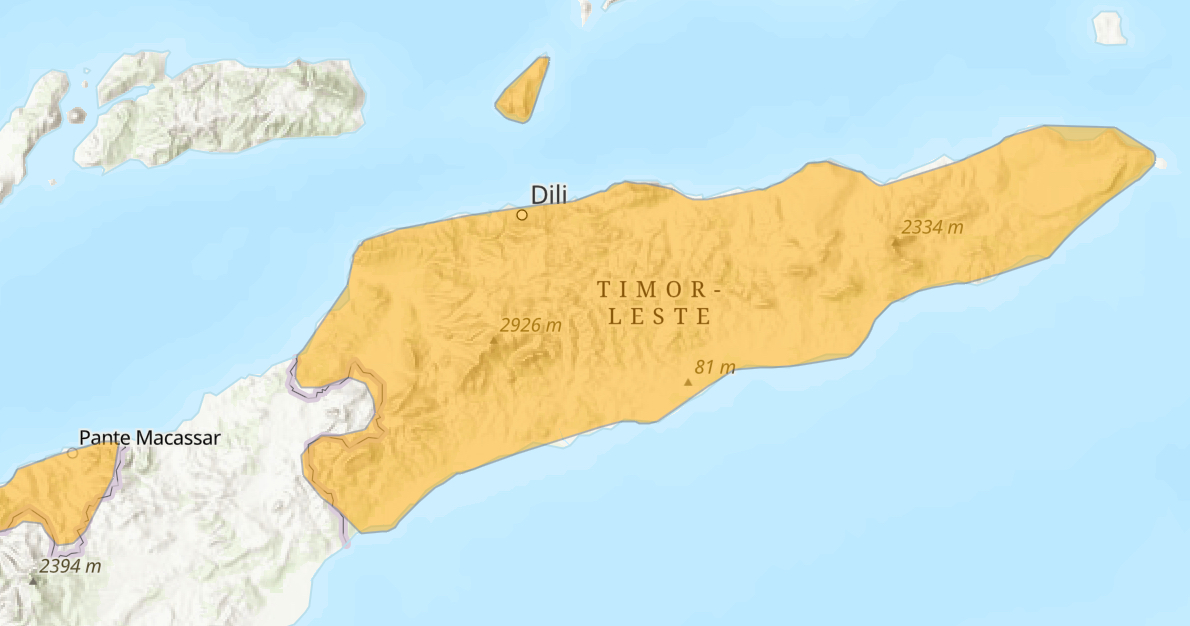UN peacekeepers left Timor-Leste in late 2012 following two peaceful elections that served as evidence of the country’s stability, putting an end to thirteen years of UN peacekeeping presence on the ground. Since then, the political and military situation has remained stable.1 While the country does not suffer from high levels of weapons and ammunition trafficking,2 it does have residual unexploded ordnance contamination on its territory.3
The UN Regional Centre for Peace and Disarmament in Asia and the Pacific (UNRCPD) is working on the ground to support the through-life management of ammunition, in collaboration with the Timorese Ministry of Defence. Efforts have included conducting an assessment of the country’s ammunition stockpile management practices, promoting the sharing of best practices among relevant national authorities on current national and regional challenges related to ammunition management, raising awareness of the danger of accumulating surplus ammunition stockpiles, and providing physical security and stockpile management training for Timorese and other regional forces.4
1 “Timor-Leste: Stability at What Cost?” Crisis Group, May 8, 2013, https://www.crisisgroup.org/asia/south-east-asia/timor-leste/timor-leste-stability-what-cost.
2 Small Arms Survey, Dealing with the Kilat: An Historical Overview of Small arms Availability and Arms Control in Timor-Leste (Geneva: Small Arms Survey, 2008), https://www.smallarmssurvey.org/sites/default/files/resources/SAS-Timor-Leste-AVA-IB1-ENG.pdf.
3 “Timor Leste: Mine Ban Policy,” Landmine & Cluster Munition Monitor, December 18, 2019, http://www.the-monitor.org/en-gb/reports/2019/timor-leste/mine-ban-policy.aspx.
4 “Ammunition Management Activity Platform (A-MAP),” GICHD, 2022, https://a-map.gichd.org.
Launch the country dashboard
Further information
Accidental explosions
Since the Small Arms Survey began collecting data in 1979, no accidental explosions have been reported in Timor-Leste.
Source: “Unplanned Explosions at Munitions Sites (UEMS) Database,” Small Arms Survey, updated December 15, 2021, https://smallarmssurvey.org/database/unplanned-explosions-munitions-sites-uems.
Cases of diversion
Several cases of diversion have been reported since 2006 in Timor-Leste.
Table 1. Cases of diversion of arms, ammunition and explosives in Timor-Leste since 2006
| Year | Location | Description |
| 2007 | Dili | A police post was raided and 25 automatic weapons and ammunition stolen. |
| 2006 | Dili | More than half of the 3,000 Glock 9 mm pistols issued to the 3,400-member police force (PNTL) went unaccounted for. In addition, more than half of the PNTL's 400 Steyr assault rifles and Heckler & Koch HK-33 sub-machine guns, 160 of the 200 FNC assault rifles, and all of the F-2000 machine pistols also went missing. |
Source: Mark Dodd, “Guns, Ammo Missing from E Timor Police,” ETAN, June 6, 2006, http://www.etan.org/et2006/june/10/06guns.htm; “East Timor Capital Quiet, Tense after Protests,” Reuters, March 6, 2007, https://www.reuters.com/article/uk-timor-protests-idUKSP21774420070306/.
Disposal
Insufficient information on the disposal of ammunition in Timor-Leste.
Needs
To further enhance safe and secure ammunition management, the following need has been identified for Timor-Leste:
- Development or refinement of standards and procedures on stockpile management
Source: Timor-Leste, National Report on the Implementation of the Programme of Action on Small Arms and Light Weapons (PoA) and the International Tracing Instrument (ITI) (New York: Permanent Mission of Timor-Leste to the UN, 2018), https://unoda-poa.s3.amazonaws.com/reports/TLS-English-60-SUBMITTED.pdf.



